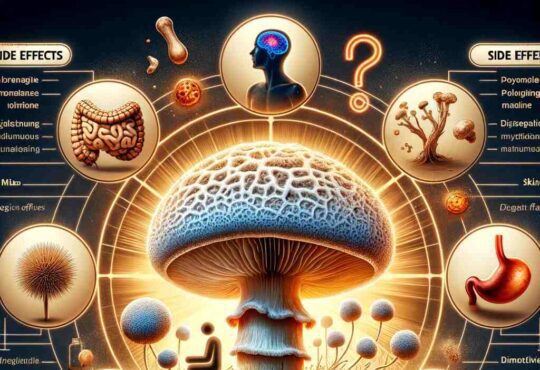Table of Contents
Introduction
Peyronie’s Disease is a condition that affects the penis, causing a curvature and other distressing symptoms. This article aims to provide an overview of the disease, its prevalence, and the impact it has on a person’s quality of life.
Anatomy of the Penis
To truly understand Peyronie’s Disease, it is essential to comprehend the structure and function of the penis. The penis consists of various components, including erectile tissue and blood vessels, responsible for its ability to achieve and maintain an erection.
One crucial part of the penis involved in Disease development is the tunica albuginea. This thick, fibrous sheath surrounds the erectile tissue and helps to maintain the shape and rigidity of the penis during an erection.


Causes and Risk Factors of Peyronie’s Disease
While the exact cause of Disease remains unknown, several factors contribute to its development. Genetic predisposition plays a significant role, as individuals with a family history of the disease are more likely to develop it themselves.
Trauma, both sports-related and accidental, has been identified as a primary cause of Disease. Penile injuries from activities such as vigorous intercourse or impact during physical sports can lead to the formation of scar tissue and subsequent curvature.
Connective tissue disorders, such as Dupuytren’s contracture or Lederhosen’s disease, have also been associated with an increased risk of Disease. Additionally, certain risk factors, including smoking, diabetes, and aging, may contribute to the development of this condition.
Pathophysiology
The pathophysiology involves the formation of plaques within the tunica albuginea. These plaques consist of fibrous tissue that replaces the normal elastic fibers, resulting in penile curvature and deformity.
Scar tissue formation plays a critical role in the development of Peyronie’s Disease. As the plaques exert pressure on the surrounding tissues, it can lead to pain and further complications, including erectile dysfunction.
Signs and Symptoms
The most noticeable symptom of Peyronie’s Disease is penile curvature, which can vary in severity. This curvature occurs due to the uneven distribution of the fibrous plaques within the tunica albuginea.
Patients with Peyronie’s Disease often experience pain during an erection. This discomfort can range from mild to severe and may negatively impact sexual performance and overall satisfaction.
Other symptoms can include erectile dysfunction, changes in the shape and size of the penis, and psychological distress. The impact on a patient’s self-esteem and relationships should not be overlooked, as Peyronie’s Disease can significantly affect their emotional well-being.


Diagnosis
Diagnosing Peyronie’s Disease typically involves a thorough medical history review and physical examination. The healthcare provider will evaluate the extent of penile curvature, assess pain levels, and inquire about any other symptoms or underlying conditions.
In some cases, imaging techniques such as ultrasound evaluations or magnetic resonance imaging (MRI) may be utilized to help visualize the plaques and evaluate the severity of the disease.
Other diagnostic methods, including blood tests, may be employed to rule out other possible causes of penile curvature and assess overall health.
Treatment Options
The management of Peyronie’s Disease involves various treatment approaches tailored to each individual’s specific symptoms and needs. Treatment options may range from monitoring and observation to surgical interventions, depending on the severity of the disease.
For patients experiencing mild symptoms, monitoring and observation may be recommended to assess any potential progression of the disease without immediate intervention.
Medications, such as collagenase clostridium histolyticum and oral medications, can be employed to help soften the plaques and potentially reduce curvature and pain.
Non-surgical treatments like penile traction therapy or intralesional injections may aid in improving penile curvature and reducing pain, particularly in patients with moderate disease severity.
In more severe cases, surgical procedures like the Nesbit procedure or excision and grafting may be necessary to correct the curvature and restore penile function.
Combination therapies, which involve a combination of medication, non-surgical treatments, and surgical interventions, may also be explored for comprehensive management of Peyronie’s Disease.
Moreover, experimental and emerging treatments are continually being researched to provide new avenues for treatment and potential advancements in improving patient outcomes.
Managing Symptoms and Coping Strategies
Coping with Peyronie’s Disease goes beyond just medical treatment; it often requires psychological support and counseling. Dealing with the emotional distress associated with this condition can be challenging, and seeking professional help can assist patients in managing their feelings and adjusting to their new reality.
Physical therapy and exercises that target the pelvic floor muscles may also offer some relief. These exercises can help improve blood flow to the penis, reduce pain, and potentially enhance sexual function.
Assisting devices, such as penile support devices or vacuum erection devices, can be utilized to aid in achieving and maintaining an erection, enhancing overall sexual function and pleasure.
Lifestyle Changes and Prevention
While Peyronie’s Disease cannot be entirely prevented, certain lifestyle changes may help reduce the risk or severity of the condition. Maintaining a healthy weight, as obesity has been linked to an increased risk, can positively impact overall health and potentially lower the likelihood of disease development.
Avoiding excessive alcohol and drug use is essential, as substance abuse can lead to damage and trauma to the penis, potentially exacerbating the symptoms of Peyronie’s Disease.
Moreover, using proper sexual techniques and practicing safe and consensual sexual activity can help reduce the risk of penile trauma and subsequent development of Peyronie’s Disease.


Frequently Asked Questions (FAQs)
- Can Peyronie’s Disease be cured?
While there is no definitive cure for Peyronie’s Disease, various treatment options aim to alleviate symptoms and improve quality of life for patients.
- How common is Peyronie’s Disease?
Peyronie’s Disease affects approximately 1%-23% of men, with prevalence increasing with age.
- Can Peyronie’s Disease affect fertility?
Peyronie’s Disease typically does not affect fertility directly. However, certain symptoms, such as erectile dysfunction, may impact sexual performance and, therefore, fertility indirectly.
- Can Peyronie’s Disease spontaneously resolve without treatment?
In some cases, Peyronie’s Disease may resolve on its own without intervention. However, seeking medical advice is crucial to monitor the disease’s progression and explore appropriate treatment options.
- Are there any natural remedies for Peyronie’s Disease?
Natural remedies for Peyronie’s Disease may include the use of certain supplements or alternative therapies. However, evidence supporting their effectiveness is limited, and it is essential to consult with a healthcare professional before using them.
Conclusion
In conclusion, Peyronie’s Disease is a complex condition that can significantly impact a person’s quality of life. Understanding the causes, symptoms, diagnostic procedures, and available treatment options is crucial in managing this condition effectively. Seeking medical advice and exploring appropriate treatment plans can help improve symptoms and overall well-being. Ongoing research and advancements in the field of Peyronie’s Disease continue to provide hope for better future outcomes.






